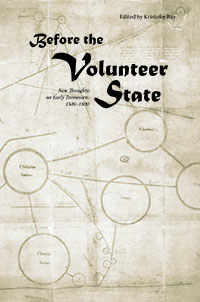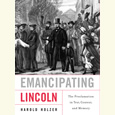Pre-Tennessee
A new essay collection edited by Kristopher Ray provides a scholarly look at Tennessee’s origins
Before the Volunteer State: New Thoughts on Early Tennessee, 1540-1800 is a stimulating series of scholarly essays edited by Kristofer Ray, an associate professor of history at Austin Peay State University in Clarksville. The chapters Ray has gathered provide insights into the early history of the land that became Tennessee and, more generally, the Southeast—especially the area west of the Appalachians. Though Native American culture began to undergo significant economic, social, and political changes long before the first European settlers arrived, adaptation became chronic upheaval as traders, land speculators, and politicians eventually displaced the native culture altogether. The American Revolution stirred the already boiling pot, which was slow to cool even after Tennessee became a state in 1796.
 Ray divides the book into two parts. The first four essays, along with an extensive introduction, cover early European contacts and influence through the middle of the eighteenth century. General readers may be surprised to learn that the tribes we are familiar with—Cherokee, Choctaw, Chickasaw, Creek, and many others—did not exist before the European influx. Before that time, most Native Americans lived in largely isolated chiefdoms in a Mississippian mound-building culture. Organization into larger tribes was a response to European contact in the “shatter zone” from about 1540 to 1730, during which Native American economic and political life underwent profound change. Mobility increased considerably: Shawnees, for example, could be found from South Carolina to Illinois. Intertribal contact and conflict increased thanks to trading competition and integration into the Atlantic mercantile economy. Surprising also is the considerable trade in Indian slaves, as well as related raids and intertribal warfare well before the African slave trade began.
Ray divides the book into two parts. The first four essays, along with an extensive introduction, cover early European contacts and influence through the middle of the eighteenth century. General readers may be surprised to learn that the tribes we are familiar with—Cherokee, Choctaw, Chickasaw, Creek, and many others—did not exist before the European influx. Before that time, most Native Americans lived in largely isolated chiefdoms in a Mississippian mound-building culture. Organization into larger tribes was a response to European contact in the “shatter zone” from about 1540 to 1730, during which Native American economic and political life underwent profound change. Mobility increased considerably: Shawnees, for example, could be found from South Carolina to Illinois. Intertribal contact and conflict increased thanks to trading competition and integration into the Atlantic mercantile economy. Surprising also is the considerable trade in Indian slaves, as well as related raids and intertribal warfare well before the African slave trade began.
 The second series of essays in Before the Volunteer State deals with the effects of frontier settlers and fortune hunters in the region that would become Tennessee. The land and its rivers had long been a corridor for Native American migrations. Now it became a corridor of white incursions, too. Europeans poured into Indian lands despite the 1763 British prohibition against settlement west of the mountains. Property issues intensified. White men had concepts of precise boundaries and exclusive individual ownership that the tribes didn’t grasp at first, so they naively signed treaties ceding vast territories in exchange for goods or promises of friendship and protection. With their hunting grounds occupied by white settlers, friction was inevitable and led to decades of bloody raids and counter-raids.
The second series of essays in Before the Volunteer State deals with the effects of frontier settlers and fortune hunters in the region that would become Tennessee. The land and its rivers had long been a corridor for Native American migrations. Now it became a corridor of white incursions, too. Europeans poured into Indian lands despite the 1763 British prohibition against settlement west of the mountains. Property issues intensified. White men had concepts of precise boundaries and exclusive individual ownership that the tribes didn’t grasp at first, so they naively signed treaties ceding vast territories in exchange for goods or promises of friendship and protection. With their hunting grounds occupied by white settlers, friction was inevitable and led to decades of bloody raids and counter-raids.
Issues of ownership, sovereignty, and control intensified during and after the Revolution. Neither colonial nor subsequent state governments had much presence in western lands, which, along with the heady ideology of revolution and independence, encouraged adventurers to attempt secession—as in the short-lived state of Franklin—and treasonous flirting with the Spanish and French. Shifting alliances between Indian tribes and the Spanish, French, and British generated chronic suspicions and conflict, too.
A thoughtful afterward traces the historiography of John Sevier, Tennessee’s first governor, and the expurgated “origins of Tennessee” story that emerged from nineteenth-century nationalism. “Over the last twenty five years scholars have begun to re-think the nineteenth century narrative, and this collection of essays is meant to contribute to that process,” Ray writes, though he admits that the essays do “not cover every aspect of the early experience.” This is not a textbook, in other words, but it is a scholarly treatment of research that textbooks have neglected, especially “the centrality of Indian-European interaction to sovereignty, jurisdiction, and identity formation in the Trans-Appalachian west.”

Ralph Bowden, who holds a Ph.D. from the University of North Carolina, has worked as an electrical engineer, history professor, home builder, alternative-energy consultant, and technical writer. A former resident of both Knoxville and Chattanooga, he lives in Cookeville.


